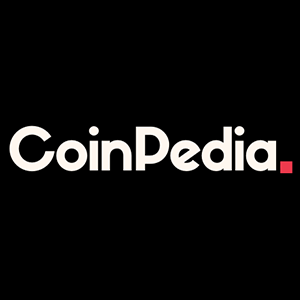Monero has held its ground for years as the gold standard for private, untraceable digital payments. With regulators tightening the screws on data privacy, Monero’s stealthy tech gives it a unique edge. It’s efficient, built to last, and upgraded with Bulletproofs to cut transaction size while keeping privacy ironclad. It’s not a flashy pick, but for anyone just dipping into digital assets and concerned about surveillance, Monero feels like a no-brainer. It’s a privacy-first project that actually walks the walk. EOS, on the other hand, is like that trusty old sedan that just won’t quit—reliable, battle-tested, and still surprisingly fast. Its delegated proof-of-stake (DPoS) system allows for massive transaction throughput without frying users in gas fees. It’s ideal for anyone starting out who wants to get their hands dirty with dApps or enterprise-level blockchain builds. Despite facing its share of roadblocks—think centralization concerns and a slower dev timeline—EOS still stands tall as one of the best crypto for beginners looking for speed and utility. Now, let’s talk about Qubetics . This project is solving problems the OGs never could. While Monero gives you privacy and EOS gives you performance, Qubetics goes one step further—it bridges real-world needs with decentralized power. Its Decentralized VPN and multi-chain wallet aren’t just nice-to-haves; they’re the tools that businesses, creatives, and even families can use right now. That’s what sets $TICS apart and lands it on every radar tracking the best crypto for beginners in 2025. Qubetics ($TICS): The Utility Powerhouse That’s Still in Presale Qubetics is packing serious heat when it comes to utility. One of its standout features? A fully decentralized VPN infrastructure. Unlike centralized options that snoop, throttle, and store logs, Qubetics lets users browse, transact, and communicate without gatekeepers. It’s secure, censorship-resistant, and built to keep users off the grid without cutting off functionality. This isn’t just about nerdy internet freedom. Think of small businesses needing secure file transfers, journalists working across borders, or remote workers accessing sensitive corporate tools. Qubetics is tailored for them—and for anyone tired of centralized snooping. That kind of usability right out the gate is exactly what makes it one of the best crypto for beginners who want tech that actually works. And then there’s the kicker: the best crypto presale in 2025 might just be Qubetics. Qubetics Presale Stats: What Early Buyers Already Know Qubetics is now in its 29th presale stage. So far, over 507 million tokens have been scooped up by more than 24,500 holders. That’s not pocket change—it’s $15.9 million raised and counting. Right now, anyone can grab $TICS for $0.1573 per token. Early buyers from stage 1 who got in at $0.01? They’re staring down a 1473% ROI. And no, it’s not too late to catch the wave. Getting in at stage 29 still means a shot at 535% ROI if $TICS hits $1 post-presale. Should it touch $5, that ROI jumps to 3078% . At $6, the return balloons to 3713% , while a $10 milestone means 6256% ROI . And if it rockets to $15 after the mainnet launch, early adopters could be looking at 9434% ROI . This isn’t a meme coin run. It’s a utility-first, infrastructure-rich platform that’s handing early backers real value. That’s why it’s being hailed as the best crypto presale who don’t want fluff—they want function. EOS: The Scalable Workhorse Still Worth Holding EOS may not be the latest shiny toy in the digital asset store, but it’s got something a lot of newcomers are looking for: dependability. Thanks to its DPoS consensus mechanism, EOS can process thousands of transactions per second with near-zero latency. That makes it a solid fit for users and builders who want things to just work. Developers dig it for the flexibility and ease of deployment. Enterprises like the predictability and scale. And anyone new to crypto will appreciate that EOS doesn’t punish them with high fees or network congestion. It continues to support a thriving dApp ecosystem, and it’s not bogged down by gimmicks or hype cycles. For those easing into the blockchain world, EOS hits the sweet spot of performance and user-friendliness. EOS has had its hurdles—centralization and slower progress compared to newer competitors—but its core strength remains intact. That makes it a reliable, grounded choice for anyone seeking the best crypto for beginners who want to start strong without overcomplicating the experience. Monero (XMR): The Privacy Standard When it comes to privacy, Monero sets the benchmark. It’s not just secure—it’s untraceable by design. That alone makes it a magnet for backers who don’t want their financial lives turned into data points. Monero’s privacy isn’t an optional layer—it’s built into every transaction. With features like Bulletproofs, it also manages to be efficient, trimming down transaction size while boosting speed. This is the coin for folks who don’t just talk about decentralization—they live it. Monero protects users from tracking, surveillance, and data exploitation, all while maintaining real-world usability. Whether someone’s buying everyday goods, funding a side hustle, or just doesn’t want financial footprints online, Monero offers one of the safest routes in crypto. It’s also a no-brainer for those entering digital assets with privacy as a top priority. That’s why XMR is consistently listed among the best cryptos for beginners , especially those leaning toward freedom-first platforms. Final Thoughts Finding the best crypto for beginners isn’t about going with whatever’s trending on social media. It’s about matching utility with accessibility, and long-term value with short-term momentum. Qubetics brings real utility through decentralized VPNs, a user-first token ecosystem, and one of the strongest presales of the year. EOS remains a workhorse blockchain that delivers scalability and simplicity. And Monero, the privacy giant, offers unmatched anonymity in a world where financial surveillance keeps growing. Backers don’t need to chase a hundred different altcoins when these three stand out across privacy, performance, and real-world application. The Qubetics presale is still open—and that opportunity window won’t stay open forever. EOS and Monero are here to stay, but Qubetics is the door many wish they’d walked through a few stages ago. For More Information: Qubetics: https://qubetics.com Presale: https://buy.qubetics.com/ Telegram: https://t.me/qubetics Twitter: https://x.com/qubetics FAQs 1. What is the best crypto for beginners to buy in 2025? Qubetics, EOS, and Monero are among the top picks due to their real-world utility, scalability, and privacy features. 2. Why is Qubetics recommended as the best crypto for beginners? Qubetics combines practical tools like a decentralized VPN with an active presale offering high ROI potential, making it ideal for newcomers. 3. How does EOS support beginners entering the crypto space? EOS offers a developer-friendly platform with high transaction throughput and low fees, perfect for those exploring dApps or enterprise use cases. 4. What makes Monero a solid choice for beginner crypto backers? Monero ensures untraceable transactions and data privacy, making it appealing for those who prioritize financial confidentiality. 5. Is it still worth joining the Qubetics presale in stage 29? Yes, even at $0.1573, entering the Qubetics presale offers significant ROI potential with analysts projecting substantial returns post-mainnet. The post From $0.01 to $0.1573-Why Qubetics Is the Best Crypto for Beginners as EOS and Monero Hold Their Ground appeared first on TheCoinrise.com .
















